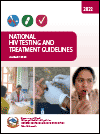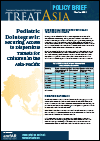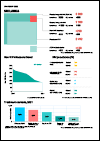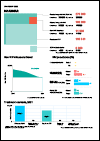What's New
Displaying results 241 - 250 of 4913

Resource | Publications,
Just as UNAIDS calls for ending inequalities to end AIDS, we are building an internal culture of equality through our Culture Transformation. This journey is grounded in intersectional feminist and anti-racist thinking and practice. It also provides reflective spaces, values introspection and offers opportunity to experiment with different ways of working and learning together.

Resource | Publications,
Mongolia has undertaken an assessment of spending on national HIV/AIDS response since 2012.The first National AIDS Spending Assessment (NASA) report focusing on expenditures in 2010-2011 was published and disseminated to decision-makers and relevant governmental and non governmental organizations (NGO) in 2012. The current report summarizes the findings of the third NASA. Unlike the previous two assessments conducted in 2012 and 2014, which estimated biennial expenditures, the current exercise assessed total spending on national HIV/AIDS response for a period of three years (2014, 2015 and 2016).

Resource | Guidelines,
Hepatitis C virus (HCV) infection is a major public health problem and cause of chronic liver disease that leads to approximately 399 000 deaths annually. In 2019, only 21% of the 58 million persons with chronic HCV infection had been diagnosed, and 13%, treated.
These guidelines provide updated evidence-based recommendations on the priority HCV-related topics from the 2018 WHO Guidelines for the care and treatment of persons diagnosed with chronic hepatitis C infection and the 2017 WHO Guidelines on hepatitis B and C testing.

Resource | Guidelines,
National Guideline on HIV testing and treatment 2022 introduces new standards for viral load testing and viral load suppression. The guidelines also stress on community-based care of PLHIV with differentiated care approach which means less hospital visits for healthy PLHIV and more time to provide for critical patients.

Resource | Publications,
Facilitating access to formulations of the HIV medicine dolutegravir (DTG) that can be used by infants and children living with HIV in the Asia-Pacific is an urgent concern.
In light of recent U.S. and European regulatory approvals of a dispersible version of pediatric DTG, amfAR’s TREAT Asia program recommends steps that national HIV programs and advocacy groups can take in order to secure access to this medicine as quickly as possible.

Resource | Publications,
The purpose of this paper is to contribute to the dialogue among communities, governments, development partners and international organisations in Asia and the Pacific on strategies and models for ensuring the sustainable participation of HIV key population communities and community organisations.
It summarises information from a desk-review of formal and informal literature, and a set of targeted key informant interviews with relevant agencies in the Asia and the Pacific region.

Resource | Reviews and Snapshots,
The country card snapshot prepared by UNAIDS Regional Support Team for Asia and the Pacific and AIDS Data Hub provides information on the HIV epidemic and response in Indonesia.

Resource | Reviews and Snapshots,
The country card snapshot prepared by UNAIDS Regional Support Team for Asia and the Pacific and AIDS Data Hub provides information on the HIV epidemic and response in India.

Resource | Reviews and Snapshots,
The country card snapshot prepared by UNAIDS Regional Support Team for Asia and the Pacific and AIDS Data Hub provides information on the HIV epidemic and response in Sri Lanka.






